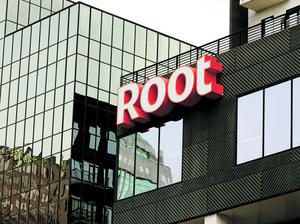
If Root Inc. did nothing else to increase revenues and cut expenses, at this year's burn rate its cash could last another four years. But that's not the plan.
The Columbus digital insurer reported a net loss of $90 million for the second quarter ended June 30, but consumed only $40 million of its unrestricted cash – leaving nearly $700 million available, on top of reserves that are required by state regulators.
"We've cut the losses and cash burn nearly in half over the last six months," co-founder and CEO Alex Timm told Columbus Business First.
Root Insurance slashed ad spending by 77% this year, cut 330 jobs in January, and filed 30 premium rate increases with states in the first half of the year. The revenue from those higher bills will start accruing in the second half.
"That gives us, we believe, ample time to get to the other side," Timm said. "Even in the next six months we expect significant improvement. We have plenty of capital."
Tuesday's earnings report marks the fourth consecutive quarter that Root (Nasdaq: ROOT) lost less money than analysts and the company projected. But the share price took yet another dive, briefly dipping below $1.
"It’s frustrating to see the market reacting the way it did today for sure," Timm said. "There’s a lot of fast-money retail activity that can drive our stock prices."
But Root does not need to change operations or its long-term plans to appease short-term investors, Timm said. Its engineers are improving the technology and aiming for long-term diversified revenue sources.
Original VC investors including Columbus-based Drive Capital control 65% of voting power, thanks to Class B shares with 10 votes for every one of a common share, and Timm himself controls 16.5% of votes, according to the proxy.
"We’re vary aligned with our major shareholders," Timm said. "We’re protecting the company while focusing on what we are best at. ... This is not about quarterly performance right now."
Dropping all but "a trickle" of digital ads and sports sponsorships had a predictable effect: Root has 20% fewer policyholders compared with the same time last year.
"Short term that can certainly look scary," Timm said. "As we see the loss ratios come down, we can go right back to turning the marketing engine back on."
Other sources of new business are bringing in more stable customer base. Root is pursuing more embedded partnerships like its quotes that appear as part of the car-buying process at Carvana Inc. The rate of customers who buy those policies, while not disclosed, has quadrupled since January and represent nearly one-third of new business.
Root also is testing a "digital agency" model in three states where it's not yet licensed, in which traditional insurance carriers use its technology to offer their policies with a better mobile customer experience.
"What’s very special about Root is our technology and tech platform," Timm said. "We want to be national."
Root is reacting to its share price in one way: On Friday it enacts a 1-for-18 reverse stock split. Boosting the per-share price opens Root to institutional investors that won't consider anything less than $5 a share. Currently Vanguard Inc. and an Oklahoma family fund are the only investors holding more than 5% that weren't early VC backers of Root.
"To a large extent, (the split is) a nonevent, because it doesn't change anything materially about the company itself," Timm said. "The underlying fundamental economics (mean) it doesn’t really matter how many shares you have outstanding."







